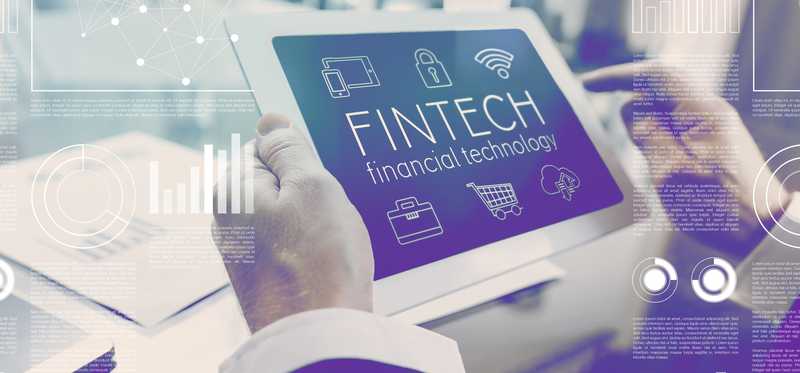10 Investing Trends to Watch in 2019

10 Investing Trends to Watch in 2019
Keep your eyes on these trend setters
One of the best ways to search for market-beating investments is to explore the industries, sectors, and trends projected to experience the most growth in the months and years ahead. Imagine how profitable it would have been to invest in Microsoft Corporation (NASDAQ:MSFT) at the dawn of the PC revolution or Apple Inc (NASDAQ:AAPL) when the first iPhone was released. Hunting for stocks in the fastest-growing industries is a proven way to find life-changing investments. Of course, that doesn't mean that all such stocks will prove to be winners and you might have to weather some stomach-churning volatility along the way, but these sectors can provide an excellent starting place for your search for outsized gains.
Previous
Next

Trend #1: Cannabis
Love it or hate it, it cannot be denied that the movement to legalize cannabis is gaining momentum. More than 47 countries now allow the medical use of marijuana. Canada and Uraguay are the only two countries that have fully legalized the consumption and sale of cannabis, though several other countries allow licensed establishments to sell it for recreational use. In the United States, 33 states have legalized its medical use and 10 states have legalized its recreational use, though it remains illegal at the federal level.
The legalization movement sweeping the globe is expected to lead to a dramatic increase in cannabis sales in 2019. In 2018, global consumer cannabis spending was an estimated $12.2 billion. In 2019, that figure is expected to rise 38% to $16.9 billion, according to an Arcview Market Research report.
This growing market has already led to some of the stocks in this sector to achieve magnificent gains in 2019: Aurora Cannabis (NYSE:ACB) is up 68% year to date, Innovative Industrial Properties (NYSE:IIPR) has increased 92%, and Village Farms International (NASDAQ:VFF) has risen an amazing 307% since the beginning of the year.
ALSO READ: 3 Top Cannabis Stocks to Buy in May
Previous
Next

Trend #2: Mobile payments
Mobile payments is another trend that continues to gain traction, especially among young consumers. The Total Systems 2018 U.S. Consumer Payment Study found that 82% of consumers between the ages of 18 and 24 were familiar with in-app payments, 27% of which had already loaded a debit card into a mobile wallet. Among all age groups, 66% had used their bank's mobile app to access their account and 44% had made peer-to-peer (P2P) payments using a mobile app. Companies such as PayPal Holdings Inc (NASDAQ:PYPL) and Square Inc (NYSE:SQ) stand to benefit tremendously from this trend, as their mobile payments apps continue to gain new users.
If anything, this trend might be more pronounced in international markets. In China, for instance, Alibaba Group Holding's (NYSE:BABA) Alipay and its partners have more than 1 billion users and Tencent Holding's (NASDAQOTH:TCEHY) Weixin Pay has more than 800 million monthly active users. In the Western Hemisphere, MercadoLibre's (NASDAQ:MELI) MercadoPago payments platform saw total payment volume grow 108% year over year on a currency-neutral basis.
Previous
Next

Trend #3: Artificial intelligence (AI)
Artificial intelligence (AI) is empowering all sorts of industries to realize new efficiencies and release improved products. PwC estimates that AI will drive global GDP 14% higher by 2030, the equivalent of adding $15.7 trillion to the global economy. About half of these economic gains will come from labor productivity improvements and half from increased demand for AI-empowered products, according to the report. It is even estimated that AI will ultimately create more new jobs than it eliminates.
Nvidia Corporation (NASDAQ:NVDA) might be one of the big winners in the space, as it makes GPUs (graphic processing units) capable of processing more simultaneous calculations than CPUs (central processing units). Splunk Inc (NASDAQ:SPLK) is another company that should benefit from AI, as it helps companies collect and categorize huge amounts of data using machine learning. Mastercard Inc (NYSE:MA) uses AI to prevent fraudulent transactions across its network. Finally, many of the end products created by Alphabet Inc (NASDAQ:GOOGL)(NASDAQ:GOOG), Amazon.com Inc (NASDAQ:AMZN), and Apple incorporate AI to increase their functionality.
Previous
Next

Trend #4: 5G wireless
5G, standing for the fifth-generation of wireless networks, is a new standard for mobile networks that promises faster speeds, lower latency, and higher data volume capabilities. 5G will bring competition to internet service providers that provide internet services to commercial and residential locations and enable many of the applications just now on the cusp of achieving significant progress (e.g. virtual reality, mobile payments, autonomous vehicles).
Xilinx Inc (NASDAQ:XLNX) makes field-programmable gate arrays which can be easily programmed and configured after purchase, making them ideal for early 5G deployments that might need to be continuously tinkered and tested as the right settings are found. Skyworks Solutions (NASDAQ:SWKS), a leading provider of RF solutions in smartphones, will provide an average of $25 of content in 5G-capable phones, a 40% increase from the content they supply in 4G phones. Corning Inc (NYSE:GLW) is the world's leading and lowest-cost provider of optical fiber, the infrastructural backbone that will make 5G networks possible.
Previous
Next

Trend #5: Fintech
Fintech, short for financial technology, occurs when technology is leveraged to make traditional financial services more efficient, accessible, and affordable. Fintech has been cited by the World Bank as one of the primary reasons why financial inclusion is on the rise, as 69% of the world's adult population was reported to have some type of money account in 2017, up from 51% in 2011. This is a crucial step for people to escape poverty, as having access to financial services makes it easier to save, invest, and access credit. Companies such as Alibaba, MercadoLibre, PayPal, and Square, make it easier for people to access financial services through mobile apps that now provide virtually all these services.
Of course, fintech encompasses much more than just mobile apps. Q2 Holdings (NYSE:QTWO) enables smaller financial institutions, such as your local neighborhood credit union, to compete with bigger banks by providing them with the digital tools necessary to build out their mobile and online offerings. BlackLine Inc (NASDAQ:BL) provides an accounting software-as-a-service (SaaS) that automates traditionally laborious tasks.
ALSO READ: 3 Top Fintech Stocks to Buy Right Now
Previous
Next

Trend #6: ESG
ESG stands for environmental, social, and governance. Applying an ESG philosophy to investing simply means considering these factors, as well as traditional financial metrics, before making an investment. Environmental factors include whether a company is a good steward of the earth's resources and how a company's practices affect the environment. The social component considers how a company treats its employees, customers, and vendors. Finally, corporate governance looks at how a company treats its shareholders and whether it prioritizes them over its own executives.
The Wall Street Journal recently reported that these types of funds now account for $9 trillion in assets under management in the U.S., and have grown at a 33% annualized rate the past two years. Even Moody's Corporation (NYSE:MCO), the credit ratings agency, recently acquired Vigeo Eiris, a French company that provides ESG data analysis. Moody's CEO Raymond McDaniel stated the acquisition was part of the company's strategy to serve the "evolving needs" of investors.
Previous
Next

Trend #7: Virtual reality
In 2018, virtual reality was a $4.5 billion market; by 2021, it could be more than a $19 billion market, representing growth of over 320%. IDC senior research analyst Jitesh Ubrani recently stated, "On the consumer front, the combination of lower prices and increased content is beginning to resonate with users. Meanwhile, commercial adoption is also on the rise for a range of use cases, including training, design, and showcasing."
In 2018, Facebook Inc (NASDAQ:FB) released the Oculus Go, a standalone VR headset that does not require tethering to expensive computer equipment and is available at a starting price of $200. This year the company launched Oculus Quest, a higher-end standalone VR headset, now available for $400. Meanwhile, Sony Corp (NYSE:SNE) has now sold more than 4.2 million PSVR sets to its PlayStation 4 users and continues to release more VR content.
Previous
Next

Trend #8: Internet of Things (IoT)
The Internet of Things (IoT) is the network of billions of connected devices that collect, receive, and transmit data. The IoT now comprises a wide range of "smart" devices, including everything from refrigerators and thermostats to wearables and door bells. HIS Markit projects that 2017's base of 27 billion devices will grow annually at a 12% rate through 2030, when there will be 125 billion connected devices. Cisco Systems Inc (NASDAQ:CSCO) estimates that there will be even more devices by 2030, pegging the future total to be closer to 500 billion by that date. Regardless of which estimate ends up being more accurate, the upward trajectory of a growing number of worldwide connected devices cannot be denied.
One of the most exciting aspects of the IoT is the growing number of devices that can monitor biometrics. Apple continues to invest heavily in its Apple Watch health monitoring capabilities and recently acquired Tueo Health, a startup that monitors asthma in children. DexCom Inc (NASDAQ:DXCM) makes devices that monitor glucose levels in diabetics.
Previous
Next

Trend #9: E-commerce
Think it's too late to invest in e-commerce? Think again. Yes, Amazon went public decades ago as an online book seller and, if you had invested then, you would be retired on your own tropical island right about now, but that doesn't mean e-commerce does not still represent a terrific opportunity for investors. In 2019's first quarter, total retail sales in the U.S. grew 2%, while e-commerce sales rose 12%, according to the U.S. Census Bureau -- a trend that does not look to slow down any time soon. Indeed, in Q1, e-commerce sales only represented a shade over 10% of all retail sales.
Amazon remains the king of this mountain. An Amazon Prime membership costs subscribers a fee to access many of its perks, such as free one- and two-day shipping for most items and music and video streaming services. In the company's 2017 shareholder letter, the company revealed it had surpassed 100 million Prime members .
Shopify Inc (NYSE:SHOP) has developed its platform into a one-stop shop for aspiring entrepreneurs and established businesses alike for setting up branded online storefronts. The company processes orders, facilitates payments, and handles shipping for its customers.
ALSO READ: Top Chinese E-Commerce Stocks to Buy in 2019
Previous
Next

Trend #10: Cloud computing
The cloud is a global network of servers, usually housed in huge data centers, acting as one large hard drive. This takes processing and computing pressure off on-site servers, personal computers, and smartphones, and allows users to access their data from any device at any time. Gartner Inc (NYSE:IT) projects that the global public cloud market will grow to $331.2 billion in 2022, a compound annual growth rate of 12.6%.
In 2006, Amazon launched Amazon Web Services (AWS), the first cloud-based computing infrastructure available for commercial use. In 2018, AWS reported $25.7 billion in sales, growing more than 40% year over year.
Microsoft's Azure, its cloud computing service for hosting applications and services, grew revenue 73% year over year in its most recent quarter.
Previous
Next

Ride investing trends to market-beating returns
By seeking out growing markets, investors are increasing the odds in their favor that they can realize returns that surpass the S&P 500's over long time periods. The 10 trends listed here all represent growing markets with long runways that look to extend well into the future. Of course, simply buying stocks in these sectors will not guarantee profitable, much less market-beating, returns. Nevertheless, these sectors represent great areas for investors to search for the next additions for their portfolios.
John Mackey, CEO of Whole Foods Market, an Amazon subsidiary, is a member of The Motley Fool’s board of directors. Suzanne Frey, an executive at Alphabet, is a member of The Motley Fool’s board of directors. Teresa Kersten, an employee of LinkedIn, a Microsoft subsidiary, is a member of The Motley Fool’s board of directors. Randi Zuckerberg, a former director of market development and spokeswoman for Facebook and sister to its CEO, Mark Zuckerberg, is a member of The Motley Fool's board of directors. Matthew Cochrane has no position in any of the stocks mentioned. The Motley Fool owns shares of and recommends Alphabet (A shares), Alphabet (C shares), Amazon, Apple, BlackLine, Inc., Facebook, Mastercard, MercadoLibre, Microsoft, Moody's, NVIDIA, PayPal Holdings, Q2 Holdings, Shopify, Skyworks Solutions, Square, and Tencent Holdings. The Motley Fool has the following options: long January 2020 $150 calls on Apple and short January 2020 $155 calls on Apple. The Motley Fool recommends Corning, Gartner, Innovative Industrial Properties, and Xilinx. The Motley Fool has a disclosure policy.
Previous
Next
Invest Smarter with The Motley Fool
Join Over Half a Million Premium Members Receiving…
- New Stock Picks Each Month
- Detailed Analysis of Companies
- Model Portfolios
- Live Streaming During Market Hours
- And Much More
READ MORE
HOW THE MOTLEY FOOL CAN HELP YOU
-
Premium Investing Guidance
Market beating stocks from our award-winning service
-
The Daily Upside Newsletter
Investment news and high-quality insights delivered straight to your inbox
-
Get Started Investing
You can do it. Successful investing in just a few steps
-
Win at Retirement
Secrets and strategies for the post-work life you want.
-
Find a Broker
Find the right brokerage account for you.
-
Listen to our Podcasts
Hear our experts take on stocks, the market, and how to invest.
Premium Investing Services
Invest better with The Motley Fool. Get stock recommendations, portfolio guidance, and more from The Motley Fool's premium services.